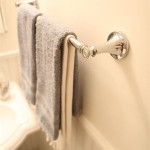How to Remove Bathroom Plumbing
Removing bathroom plumbing is a task often undertaken during renovations, repairs, or when replacing fixtures. It requires careful planning, proper tools, and a solid understanding of the plumbing system to avoid damage to the surrounding structure and prevent water leaks. A systematic approach is crucial to ensure the process is completed safely and efficiently. This article details the steps involved in removing bathroom plumbing, offering guidance to facilitate the undertaking.
Preparation and Safety Precautions
Before commencing any plumbing work, preparation is paramount. This preparatory phase involves gathering the necessary tools and materials, shutting off the water supply, and safeguarding the work area. Neglecting these initial steps can lead to complications and potential hazards.
The first and most important step is to shut off the water supply to the bathroom. Typically, there will be shut-off valves located beneath the sink and behind the toilet. Turn these valves clockwise until they are fully closed. If these individual valves are not present or malfunctioning, the main water supply to the entire house must be shut off. The main shut-off valve is usually located near the water meter or where the water line enters the building. Once the water is shut off, open the faucets in the bathroom to relieve any residual pressure in the pipes.
Gather the necessary tools for the job. Essential tools include: pipe wrenches (various sizes), adjustable wrenches, a basin wrench (for hard-to-reach nuts on faucets), pliers, screwdrivers (both flathead and Phillips), a hacksaw or pipe cutter (for cutting pipes), a bucket, towels, and safety glasses. Having these tools readily available will streamline the process and prevent unnecessary delays.
Protecting the work area is also crucial. Cover the floor with drop cloths or old towels to prevent damage from dropped tools or spilled water. Wear safety glasses to protect the eyes from debris and gloves to protect the hands from grime and sharp edges. Ensure adequate ventilation in the bathroom, especially if dealing with older plumbing that may contain lead or other harmful materials.
Removing Faucets and Sinks
Once the preparatory steps are complete, the removal of faucets and sinks can begin. This process requires carefully disconnecting the water supply lines and drainpipes, and then detaching the sink from the countertop or wall.
Start by disconnecting the water supply lines from the faucet. Place a bucket beneath the connections to catch any remaining water in the lines. Use adjustable wrenches to loosen the nuts connecting the supply lines to the faucet. Be cautious not to overtighten or strip the nuts. Once the nuts are loose, carefully disconnect the supply lines. If the supply lines are old and corroded, they may be difficult to remove. In such cases, a penetrating oil or a specialized plumbing wrench may be necessary.
Next, disconnect the drainpipe from the sink. This typically involves loosening the slip nuts that connect the P-trap to the sink drain and the drainpipe in the wall. Place a bucket beneath the P-trap to catch any water or debris that may be trapped inside. Use pliers to loosen the slip nuts, and then carefully remove the P-trap and drainpipe. If the drainpipe is made of metal and is corroded, it may be necessary to use a hacksaw or pipe cutter to cut the pipe.
After disconnecting the water supply lines and drainpipe, the sink can be detached from the countertop or wall. If the sink is mounted to the countertop, there will typically be clips or screws holding it in place. Locate these fasteners and remove them. If the sink is mounted to the wall, there will be brackets supporting it. Remove the screws or bolts holding the brackets to the wall. Once the fasteners are removed, carefully lift the sink away from the countertop or wall. If the sink is sealed with caulk, use a utility knife to carefully break the seal before attempting to lift the sink.
Removing Toilets
Removing a toilet involves disconnecting the water supply, detaching the toilet from the floor, and removing the toilet from the bathroom. This process requires careful handling to prevent damage to the toilet or the surrounding floor.
Begin by shutting off the water supply to the toilet. The shut-off valve is typically located near the base of the toilet. Turn the valve clockwise until it is fully closed. Flush the toilet to remove as much water as possible from the tank and bowl. Use a sponge and bucket to remove any remaining water from the tank and bowl. Disconnect the water supply line from the toilet tank. Use an adjustable wrench to loosen the nut connecting the supply line to the tank.
Next, remove the caps that cover the bolts holding the toilet to the floor. These caps are typically located on either side of the base of the toilet. Use a screwdriver or pliers to pry the caps off. Once the caps are removed, loosen the nuts securing the toilet to the floor. These nuts may be corroded, so penetrating oil may be necessary. Use a wrench to loosen the nuts, and then remove them and the washers. If the bolts are severely corroded, it may be necessary to cut them with a hacksaw.
With the bolts removed, the toilet can be lifted from the floor. Gently rock the toilet back and forth to break the seal between the toilet and the floor. Be cautious not to damage the floor when rocking the toilet. Once the seal is broken, carefully lift the toilet straight up and away from the flange. Have a helper assist with lifting the toilet, as they can be quite heavy. Place the toilet on a drop cloth or old towel to protect the floor. After the toilet is removed, stuff a rag into the drainpipe to prevent sewer gases from escaping into the bathroom.
Removing Bathtubs and Showers
Removing bathtubs and showers can be more complex due to their size and the way they are installed. This process may involve disconnecting drainpipes, removing surrounding walls, and maneuvering the tub or shower enclosure out of the bathroom.
Begin by disconnecting the drainpipe from the bathtub or shower. This typically involves accessing the drain from beneath the floor or through an access panel. Locate the drainpipe and loosen the slip nuts that connect it to the drain. Place a bucket beneath the drainpipe to catch any water or debris that may be trapped inside. Use pliers to loosen the slip nuts, and then carefully remove the drainpipe. If the drainpipe is made of metal and is corroded, it may be necessary to use a hacksaw or pipe cutter to cut the pipe.
Next, remove any surrounding walls or panels that are obstructing the removal of the bathtub or shower. This may involve removing tile, drywall, or other wall coverings. Use appropriate tools, such as a pry bar or hammer, to carefully remove the wall coverings. Be cautious not to damage any underlying plumbing or electrical wiring.
Once the drainpipe and surrounding walls are removed, the bathtub or shower can be removed from the bathroom. This may require multiple people due to the size and weight of the fixture. Carefully lift the bathtub or shower and maneuver it out of the bathroom. If the bathtub or shower is too large to fit through the doorway, it may be necessary to disassemble it into smaller pieces. This may involve removing panels, doors, or other components. Once the bathtub or shower is removed, clean the area thoroughly.
Handling Pipes and Waste Disposal
After removing the fixtures, attention must be directed to the pipes. The pipes might need to be capped, relocated, or entirely removed, depending on the renovation plans. Proper disposal of old fixtures and plumbing materials is equally important.
If the pipes are not being relocated or replaced, they should be capped off to prevent water leakage and sewer gas from entering the bathroom. Use appropriate pipe caps and pipe dope to seal the pipes. Ensure the caps are securely tightened to prevent any leaks. If the pipes are being relocated, they will need to be cut and rerouted to the new location. Use a hacksaw or pipe cutter to cut the pipes to the desired length. Ensure the cuts are clean and straight to allow for proper connection to the new plumbing.
Disposing of old fixtures and plumbing materials requires following local regulations and environmental guidelines. Old toilets and sinks can often be disposed of at landfills or recycling centers. Metal pipes can be recycled at scrap metal yards. Hazardous materials, such as lead pipes, must be disposed of properly at designated hazardous waste disposal sites. Contact local waste management authorities for information on proper disposal methods.
Thoroughly clean the bathroom after removing the plumbing. Remove any debris, dust, and grime from the floors and walls. Inspect the area for any damage and make necessary repairs. This will prepare the bathroom for the next phase of the renovation. Remember to consult with a qualified plumber if complex plumbing work is involved or if there is uncertainty about any aspect of the removal process. Following these steps will ensure a safe and efficient removal of bathroom plumbing.

How To Remove A Bathroom Sink Stopper Take Out Pop Up Drain From

How To Remove A Bathtub Drain Forbes Home

5 Natural Ways To Unclog A Bathroom Sink Hiller How

How To Remove A Drain From Bathroom Sink Inside Out Property Inspectors

How To Unclog A Bathroom Sink Hana S Happy Home

How To Replace A Sink Stopper Quick And Simple Home Repair

Diy Bathroom Sink Removal

How To Remove An Old Bathroom Sink

6 Ways To Fix Clogged Drains Keep Pipes Flowing Freely Horizon Services

How To Remove A Shower Drain Homeserve Usa
Related Posts







